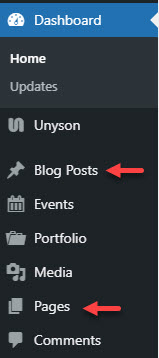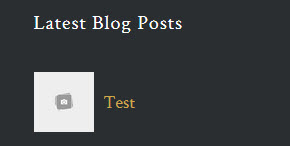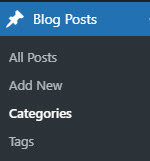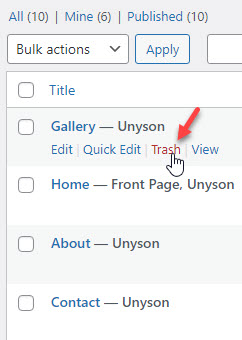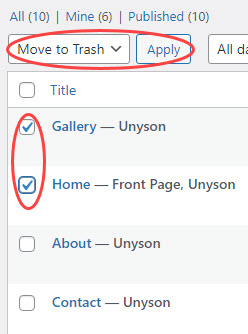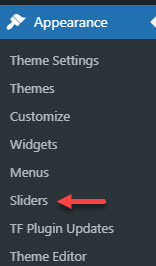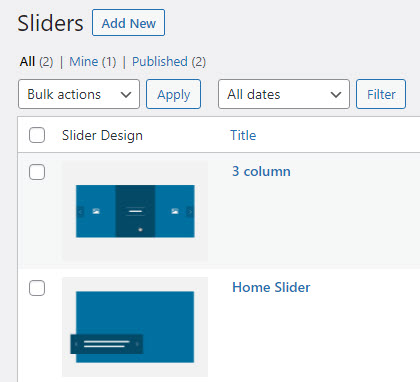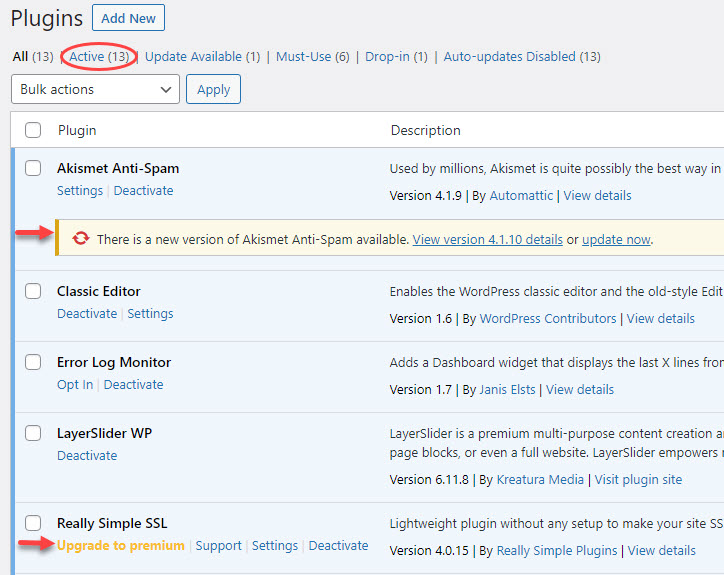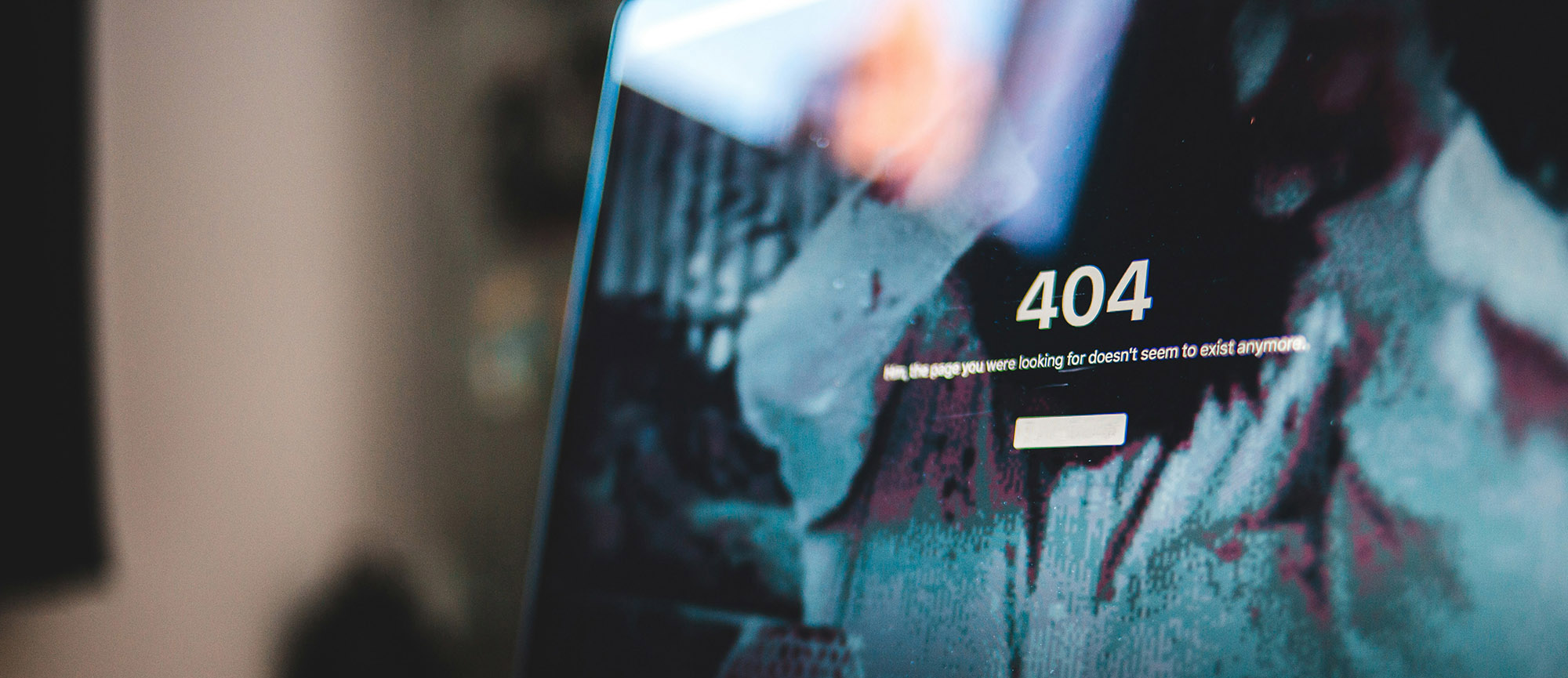This WordPress how-to list includes basic functions you’ll want to know when working on your site, as well as the lay of the land in the WordPress dashboard.
It’s quite the exciting time when you first launch your WordPress website! The possibilities are endless when it comes to how you can customize your site to your brand, your content, and your business strategy. When you’re ready to start building out your site further, or just modifying things from the initial build, you’ll need to have a solid understanding of the WordPress dashboard and functions.
The following WordPress how-to guide includes basic operations you’ll want to know when working on your WordPress site, as well as the lay of the land in the WordPress dashboard.
How to Add a Page vs. a Blog Post
First things first: let’s add a page. Should be straight forward, right? It is, but there’s an important distinction to note. The main site pages are housed separately from blog posts. Even though each blog post represents a page on the site, they are accessed in a different area than the other pages of your site. This is because blog posts have different elements associated with them such as tags, categories, and comments.
Once you have accessed the menu of Pages or Posts, simply click the Add New button. For pages, the areas you want to pay attention to are:
- Page Attributes. This is a section in the right sidebar. If you want your new page to show up in your site menu, this is where you designate it as a menu item.
- SEO. This applies to both pages and blog posts. Don’t neglect your Search Engine Optimization! At the very bottom of the page/post editor are the Page Title and Description fields. Ensure these are populated and utilizing the keywords/phrases you are optimizing for, and that the description describes what can be found on the page. The description is what shows up under the link in Google Search.
For blog posts, the areas you want to pay attention to are:
- Featured Image. In the right sidebar, this is where you can choose a certain image to show up with the teaser of your blog post where recent posts show up on your site (usually the home page). On many themes, if you leave this blank, the teaser image will just show a placeholder icon, which of course looks bad (see below).
- Categories. Also in the right sidebar, your list of blog categories will appear, and you’ll want to check at least one of them that’s related to your post. This helps people filter your blog posts down to the topics they are interested in. When they are on your main blog page they will see this category list and can click on one to see all the posts associated with that topic–very helpful! You can add new categories right in the editor, or add, delete, modify in the Categories section under the Posts menu.
- Author. Towards the bottom of the page editor you will find this field and you’ll want to set it to the person who should get credit for authoring the post. Otherwise, the post might show up with the default ‘admin’ as the author. This is especially important for companies who have multiple people writing their blog posts.
How to Delete a Page in WordPress
This is easy to do and can be done two different ways. If you just want to delete one page, go to Pages in the menu, hover over the page to be deleted, and click Trash.
If you have multiple pages to delete all at once, click the drop down above your list of pages that says Bulk Actions, and choose Move to Trash. Then click the checkbox next to each page you want deleted and hit the Apply button to delete them all.
Oops! You made a mistake? If your WordPress hosting and maintenance partner is doing nightly backups (and they should be), then your deleted page can be restored from a backup.
How to Access the Image Slider in WordPress
This one’s a bit trickier, as it depends on the theme you’re using, and the plugins you may have installed for a custom image slider. Image sliders are commonly found on the home page of websites, with large images moving past and calls-to-action inviting clicks to a certain page. They can also be found on interior pages as well.
The first place you might look to edit the slider is under the Appearance menu item.
Here you might see something like the example below. This site has two different styles of image sliders in use, one that displays three images in columns, and another that includes one image and an overlay of text, the title indicating that the latter is the one showing on the home page.
If you don’t find your active slider there, then your site might be using a special plugin to display the slider. Look along the left side menu for anything that says ‘Slider’ in it. In the example below, two different slider plugins were found.
In this case, when opened, those two sliders showed there was nothing inside them, so the site isn’t using either plugin.
How to View Plugins
WordPress plugins are what you add to your website to make it do what you want it to do. For example, if you want your visitors to be able to book an appointment, or use a special calculator to view the costs associated with a unique set of options, you would use a plugin to do this for you. There are many WordPress plugins available to meet a variety of functionalities.
To view the plugins on your website, go to the Plugins menu. Here you can choose what to view: just the ones that are active, inactive, or all of them at once. This is also where you will see if there are updates available to a plugin, or if there’s an opportunity to upgrade to a version with more functionality. Keeping plugins up to date is an important piece of site security, as new versions may address security vulnerabilities. Your hosting and maintenance company will keep an eye on these updates. You can also delete unused plugins here as well.
How to Check Your WordPress Version
As with many things in WordPress, you can do this two different ways:
1. Hover over the WP icon in the upper left corner, click About WordPress, and you will see the version your site is on, along with information about that version.
2. Click on Dashboard, scroll all the way to the bottom of your dashboard and look in the bottom right corner for your version.
Knowing Where to Look in WordPress is Half the Battle
As you can see, a lot of things you want to do in WordPress are easy to find, and other times you have to know where to look. Stay tuned for the next post in our WordPress how-to series in which we’ll dive into menus, headers, footers, media, and more!
